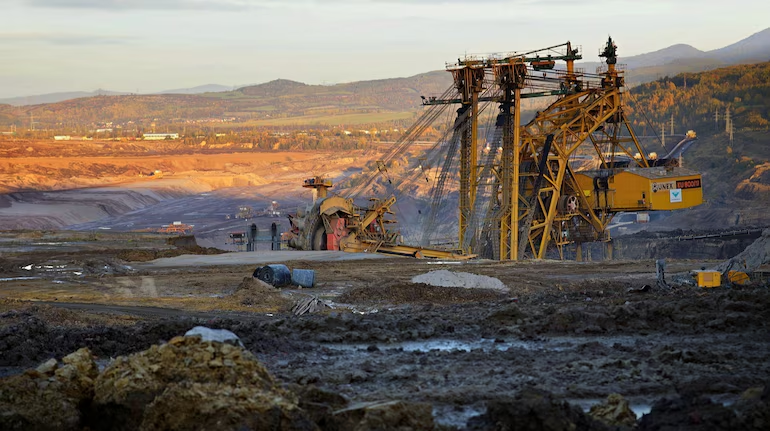
Executive Summary
The world faces a persistent financing gap for resilient, low-carbon infrastructure—trillions annually through 2030 and beyond. Public budgets alone cannot close it. The decisive variable is private capital at scale, mobilized through credible policy, risk-sharing, and pipelines that meet institutional investors’ risk/return, liquidity, and fiduciary needs.
This paper proposes a practical playbook for crowding in private investment into energy transition, resilient grids, transport, water, digital, and nature-based solutions—especially in emerging markets. We detail proven instruments (guarantees, blended finance, sustainability-linked structures, FX and political risk solutions), institutional reforms (MDB capital optimization, country platforms, project preparation), and market plumbing (taxonomy alignment, data and disclosure, transition finance). We conclude with a prioritized action plan for the EU and partners.
Core message: mobilization will happen at scale only where policy credibility intersects with bankable pipelines and de-risked cash flows. That requires fixing upstream policy risk, midstream preparation, and downstream capital market access—simultaneously.
1) The Challenge: Scale, Risk, and Bankability
- Scale mismatch: Institutional investors manage >$100 trillion but deploy little in emerging-market infrastructure due to perceived risk, ticket size, illiquidity, and origination costs.
- Risk structure: Investors are comfortable with construction and demand risk only when compensated and/or mitigated (e.g., availability-based contracts, minimum-revenue guarantees, CfDs). Macro risk—FX convertibility, transfer restrictions, political interference—often dominates credit analysis.
- Pipeline deficit: Many projects fail before tender for lack of feasibility work, land/permitting clarity, and standardized documentation; cost of early preparation is high relative to uncertain outcomes.
- Policy credibility: Tariff politics, off-taker solvency, and unpredictable regulation drive up discount rates. Mobilization hinges on credible policy frameworks (independent regulators, cost-reflective tariffs with lifeline protections, and legally enforceable contracts).
Implication: De-risking cannot be an afterthought. It must be designed in from the start.
2) A Three-Layer Mobilization Framework
Upstream – Policy & Institutions
- Independent economic regulation for energy/water; cost-reflective tariff trajectories with targeted social protection.
- National transition plans with quantified sector roadmaps (power, grids, transport, buildings, industry, land use).
- Procurement reform: competitive tenders, model contracts, standardized PPAs/availability agreements, and transparent dispute resolution.
Midstream – Project Preparation & Structuring
- Dedicated Project Preparation Facilities (PPFs) with performance-based funding; bankable feasibility, ESIA, resettlement frameworks, community benefit plans.
- Risk allocation matrices codified early (force majeure, change-in-law, FX pass-through).
- Country platforms to coordinate donors/MDBs around a coherent pipeline and timelines.
Downstream – Capital Markets & Risk Transfer
- Blended finance stacks: first-loss capital, guarantees (credit, political, payment), liquidity and FX hedgingwindows.
- Securitization of operational assets (yieldcos/infrastructure trusts) to recycle equity into new builds.
- Green/transition/sustainability-linked bonds and loans; outcome-based instruments (resilience bonds, pay-for-results).
3) Instruments That Work (and How to Use Them)
3.1 Guarantees & Insurance
- Partial Credit Guarantees (PCGs): Wrap a tranche to investment grade; reduce required return and extend tenor.
- Political Risk Insurance (PRI): Cover expropriation, currency inconvertibility/transfer, war/civil disturbance, breach of contract.
- Payment/Off-taker Guarantees: Backstop state utilities’ obligations; can be multi-layered (escrow + standby letter of credit + MDB guarantee).
- Construction Completion Guarantees: Improve bankability for first-of-a-kind technologies.
3.2 Blended Finance & Concessionality
- First-loss junior equity (public/concessional) to absorb early losses; crowd in senior private debt.
- Interest-buydown to meet affordability ceilings (e.g., social tariffs) while keeping projects viable.
- Results-based financing (disburse on verified connections/tons reduced).
- Viability gap funding for resilience/public goods where revenue is diffuse.
3.3 FX and Liquidity Solutions
- Hedging windows (pooled FX facilities, long-dated swaps) to manage currency risk where local markets are thin.
- Liquidity backstops (DSRA support, revolving liquidity) to protect debt service through shocks.
- Local currency mobilization: Anchor local pension and insurance capital via credit-enhanced LCY bonds; co-guarantee with MDBs.
3.4 Revenue-Model Enablers
- Contracts for Difference (CfDs) for renewables/green hydrogen to stabilize merchant exposure.
- Availability-based PPPs for roads/metro/water; government pays for service levels, not traffic risk.
- Regulated Asset Base (RAB) models for grids and nuclear to lower WACC through stable, inflation-linked returns.
3.5 Transition & Nature Finance
- Sustainability-Linked Loans/Bonds (SLL/SLB) with KPI-linked coupons; credible SPTs, step-ups/downs.
- High-integrity carbon offtake (advanced purchase agreements) to monetize mitigation outcomes.
- Nature-based solutions with payments for ecosystem services and resilience co-benefits (mangroves, watershed restoration).
4) Building the Pipeline: From Idea to Financial Close
- Screening & Prioritization: Link to NDC/long-term strategy; run cost-benefit and climate-resilience tests.
- Preparation Grants: Fund feasibility, grid/land assessments, ESIA, and stakeholder plans.
- Standardization: Use model PPAs, risk matrices, direct-agreement templates with lenders.
- Market Sounding: Early engagement with banks, DFIs, and institutional investors to calibrate risk and tenor.
- Blended Stack Design: Define concessional layer and guarantees before tender; publish term sheets.
- Tender & Award: Competitive, transparent, time-bound; clear evaluation criteria (price, service quality, local content where justified).
- Post-Close Monitoring: MRV platforms, grievance mechanisms, KPI dashboards, and data rooms for refinancing/securitization.
5) Platforms and Vehicles for Scale
- Country Platforms: Government-led, donor-aligned, sector-specific pipelines (e.g., energy transition).
- Thematic Facilities: Grid-only or water resilience funds using repeatable documentation to reduce transaction costs.
- Anchor Off-Takers: Credit-enhanced utilities/municipal SPVs with escrowed revenues and step-in rights.
- Aggregation/Securitization: Pool small distributed assets (rooftop solar, efficiency loans) into investable notes.
- Yield Vehicles: Listed/unlisted yieldcos to recycle developer equity once assets are operational.
6) Governance, Integrity, and Inclusion
- Anti-corruption and procurement integrity: E-tendering, beneficial ownership registers, independent audit clauses.
- Social safeguards: FPIC/consultation, resettlement frameworks, local jobs/SME participation, gender-responsive design.
- Just Transition: Worker reskilling, revenue-sharing with municipalities, and community benefit agreements.
- Data & Disclosure: Project-level climate and impact reporting aligned with ISSB/TCFD; taxonomy-aligned use-of-proceeds.
7) Role of Europe and the EU (with ECSAP’s Lens)
- EU as market shaper:
- Scale EU guarantees and InvestEU to crowd in institutional investors.
- Support long-tenor FX hedging for EU–Global South projects.
- Promote taxonomy interoperability (EU–IFRS–ASEAN) to reduce fragmentation.
- MDB reform & co-guarantees:
- Optimize MDB balance sheets (callable capital, portfolio insurance) and expand guarantee windows.
- Standardize co-guarantee frameworks with EIB/EBRD + national DFIs.
- Export credit modernization: Tie ECA support to transition KPIs; blend with concessional climate windows.
- EU Global Gateway: Prioritize grids/interconnectors, critical minerals value chains with stringent ESG.
- Local capital markets: Partner with regulators to enable infrastructure bonds/REITs, local pension allocations, and credit enhancement.
8) Sector Playbooks (Illustrative)
8.1 Power & Grids
- Problem: Intermittency + aging grids block renewables.
- Solution: RAB-style returns for regulated TSOs/DSOs; CfDs for generation; capex trackers for digitalization and storage.
- Instruments: PCGs for grid bonds, availability-based contracts for storage, revenue-stabilization funds.
8.2 Urban Transport
- Problem: Farebox volatility, capex spikes.
- Solution: Availability-based PPPs with performance KPIs; pooled municipal credit facilities; green SLBs for operators.
- Instruments: Liquidity facilities, multilateral guarantees, land value capture.
8.3 Water & Resilience
- Problem: Low tariffs, climate shocks.
- Solution: Output-based aid for connections, blended capex, resilience bonds linked to catastrophe triggers.
- Instruments: PRI for regulatory risk, parametric insurance for drought/flood.
8.4 Industrial Decarbonization
- Problem: Tech/policy risk (hydrogen, CCUS).
- Solution: CfDs for low-carbon products (green steel/cement), public offtake, state-aid-compatible grants.
- Instruments: First-loss equity, completion guarantees, revenue floors.
9) What “Bankable” Looks Like (Investor Checklist)
- Policy: Independent regulator; enforceable contracts; transparent tariff paths.
- Counterparty: Rated or credit-enhanced off-taker; escrow; step-in rights.
- Revenue: Stabilized via CfD/availability; inflation indexing; currency mitigation or LCY structure.
- Structure: Standardized documentation; tested security package; insurance.
- Impact & Reporting: Clear KPIs (tCO₂e avoided, connections, resilience metrics); third-party verification.
- Exit/Refinance: Path to refinancing or securitization once operational.
10) Action Plan (12–24 Months)
For Governments
- Publish sector transition roadmaps and standardized project documents.
- Capitalize PPFs and adopt clock-based permitting.
- Establish FX and payment backstops with MDB partners.
- Launch two to three thematic facilities (grids, water resilience, efficient buildings) with blended finance.
For EU/MDBs/DFIs
- Expand guarantee windows and make them fast, standard, and scalable (templates + SLAs).
- Provide long-tenor FX hedging and liquidity lines.
- Align taxonomy and disclosure to cut friction; support transition-label guidance.
- Pilot aggregation vehicles for distributed assets with securitization pathways.
For Investors
- Commit anchor allocations to investment-grade wrapped tranches.
- Use SLB/SLL mandates with robust KPIs; require MRV.
- Partner early in market sounding to shape bankable tenders.
Conclusion
Unlocking private capital for climate-aligned infrastructure is not a mystery—it is a systems task: credible policy, prepared pipelines, and risk-sharing that matches investor constraints. Europe can lead by exporting regulatory certainty, standardization, and blended finance at scale—crowding in private capital where it matters most. If we build the institutions and instruments described here, the trillions will follow.
Annex A — Sample Blended Finance Stack (Illustrative)
- Senior Debt (Private): 55–65%, A–BBB wrapped via PCG; tenor 15–20y.
- Mezzanine (DFI): 10–15%, unwrapped; PIK features during construction.
- First-Loss Equity (Concessional/Climate Window): 10%.
- Sponsor Equity: 10–15%.
- Risk Mitigation: PRI (expropriation, transfer), payment guarantee (12 months), DSRA liquidity line, FX swap facility (10–12y).
- Revenue: CfD or availability-based; inflation-linked.
- KPIs: tCO₂e avoided, resilience index, jobs (gender-disaggregated), local content share.
Annex B — Risk Allocation Matrix (Excerpt)
- Construction: EPC contractor; LDs and performance bonds.
- Demand/Revenue: CfD/availability payment borne by public counterparty; force majeure carve-outs.
- Change-in-Law: Shared per threshold; tariff adjustment formula.
- FX: Hedging window + tariff indexation; convertibility insured.
- ESG: Sponsor responsible; independent monitoring; grievance redress.
Annex C — Model Impact KPIs
- Mitigation: tCO₂e avoided per € invested; grid loss reductions.
- Adaptation: Service continuity hours; avoided damages (parametric triggers).
- Social: New connections, affordability (≤5% household income), jobs and training.
- Governance: Procurement transparency score; time-to-financial-close.






